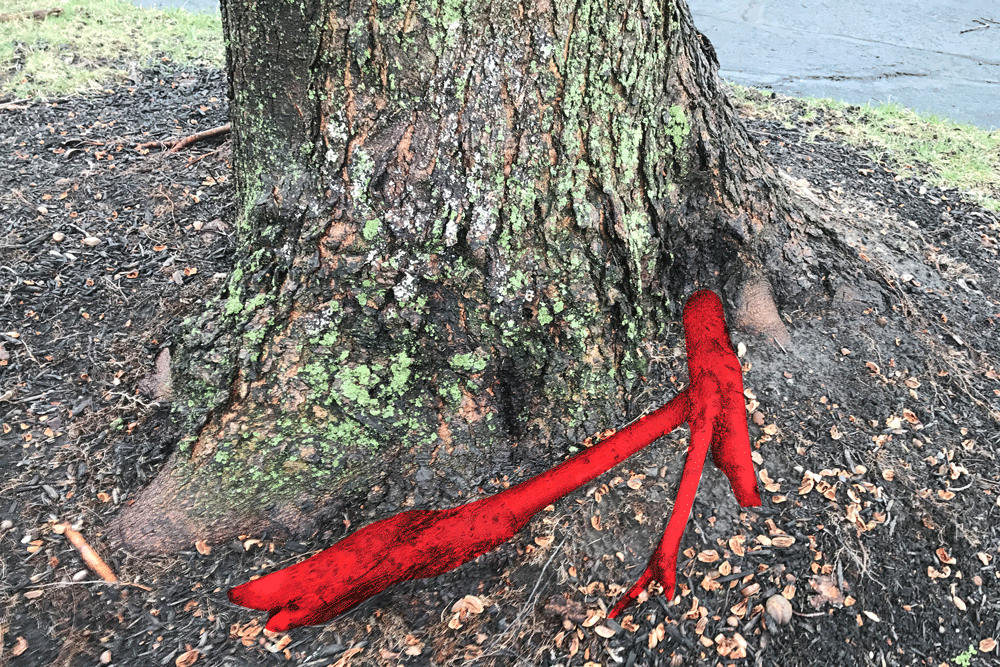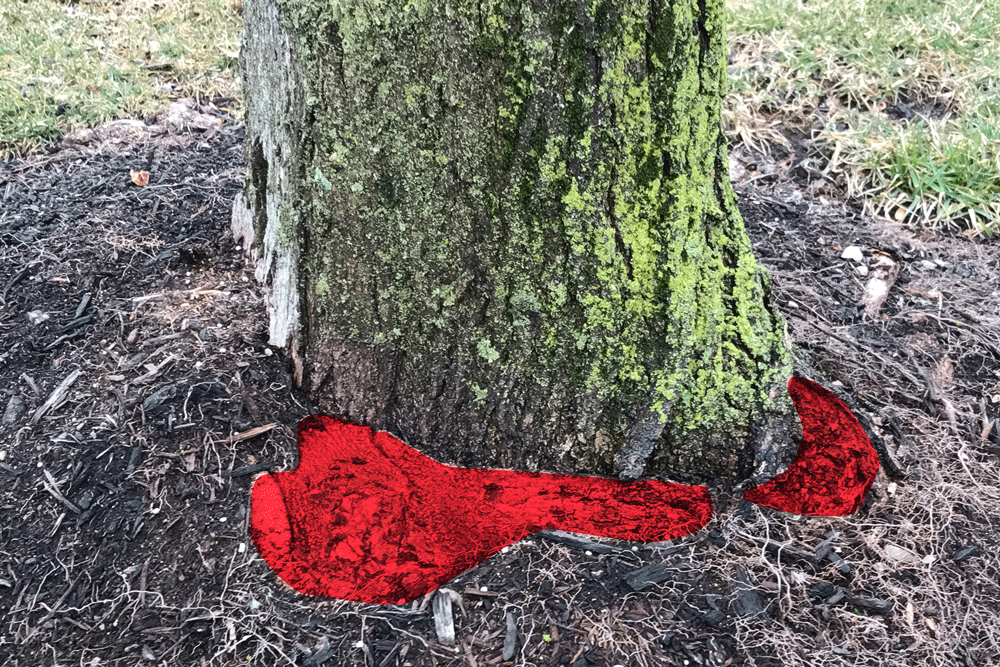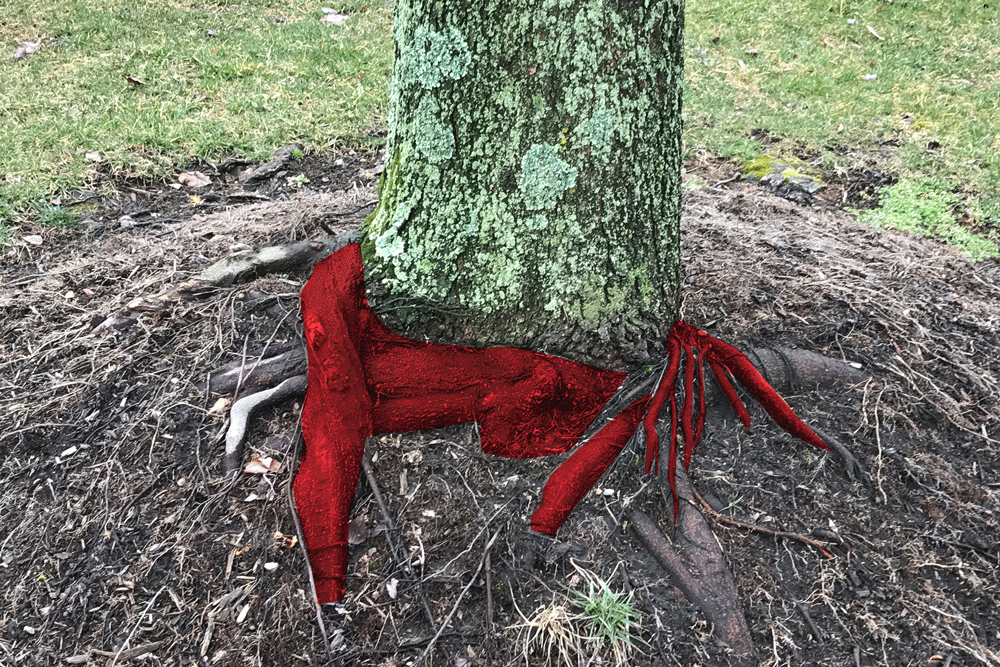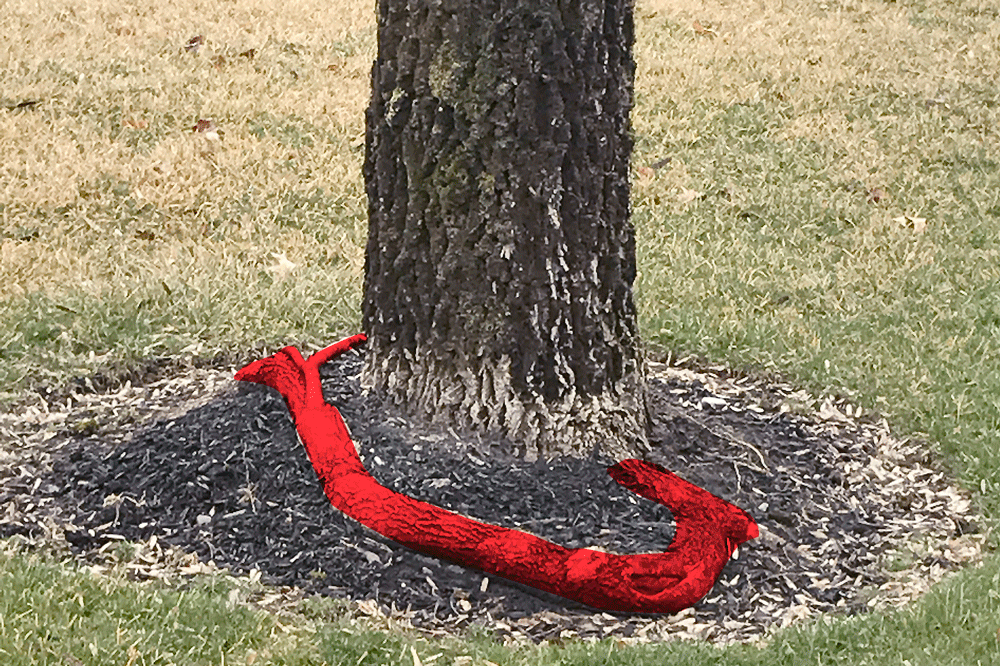Please note: This article was originally published on 3/28/2018 and was republished on 3/25/2021.
Unfortunately, more and more trees are “growing up” in unnatural environments that force their root systems into confined spaces which leads to the formation of girdling roots. From the start of a tree’s life, girdling roots may be forming. Trees grown in nurseries are forced to grow in small containers. This practice encourages the binding and tangling of roots AKA pot-bound. Poor nursery practices and poor planting practices are the two most common ways girdling roots are introduced into landscapes.
Other “tight spaces” include trees planted near homes, backyard structures, sidewalks, or roads. Even a perfectly placed tree can fall victim to girdling roots by the act of over-mulching its base –a trend that has resulted in the death of many trees by many well-intentioned homeowners
Four Signs of Girdling Root Issues
1. The tree appears to be dying from the top down
2. The tree is late to leaf out in the spring and/or has smaller than normal leaves
3. There are visible roots above the surface circling the trunk:
4. There is no visible root flare:
Good - Root flare is above ground
Bad - Root flare is below the mulch
Why do Girdling Roots Form?
In an attempt to survive, the trees root system branches out in search of nutrients, only to be blocked by nearby structures and are forced to re-direct backward onto themselves, serving as a tourniquet –cutting off the nutrients the tree was so desperately in search of. Root collar excavation serves to identify these “problem roots” before they cause permanent irreversible damage.
How We Fix The Problem
Root collar excavation is a technique used to expose “problem roots” that may be suffocating your tree and cutting off vital nutrient uptake, ultimately leading to the demise of your tree. These “problem roots” are known as girdling roots. Girdling roots are roots that tightly wrap themselves around the base of a tree in an unnatural fashion. A tree root collar (AKA tree root flare) is the area where the first division of roots attaches to the trunk of the tree and is the area where girdling roots form.
Root collar excavation is a process that involves directing high-pressure air at the base of the tree to displace local soil in order to inspect the root system. Once problem roots are identified we begin the process of careful and selective root pruning to remove the unwanted roots while keeping the tree healthy and vigorous.
Step 1
Review the tree to see if any visible roots are wrapped around the base of the tree. Another symptom of girdling roots is die-back starting in the top of the tree.
Step 2
Using an AirSpade, the soil will be blasted to expose the tree’s root system below the surface. Don’t worry, the AirSpade only moves the soil and does not hurt the tree and it’s fibrous roots.
Step 3
The arborist will then identify all the girdling roots and remove them using hand tools and/or a chainsaw.
Step 4
The root zone is then covered with composted mulch and voila! - the tree can “breathe” again!
Contact Russell Tree Experts for Help!
It may be hard to identify girdling roots on your own tree so if you have any questions, our certified arborists at Russell Tree Experts will be happy to inspect your trees. We can perform root collar excavation year-round but we recommend doing this in early spring or late fall as it is healthiest for the tree.
How to Avoiding Girdling Roots
Avoid over-mulching! Avoid those mulch volcanos.
Plan ahead! Pick your planting site wisely, use proper planting practices.
Choose tree species wisely! Some trees are at higher risk of developing girdling roots (ie: Maple, Crabapple, Cherry, and Pear trees).












